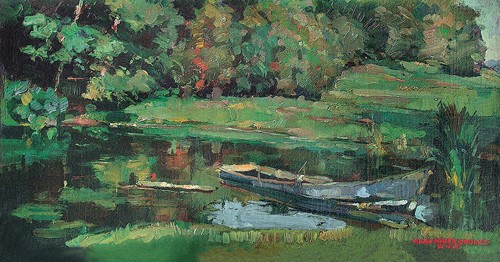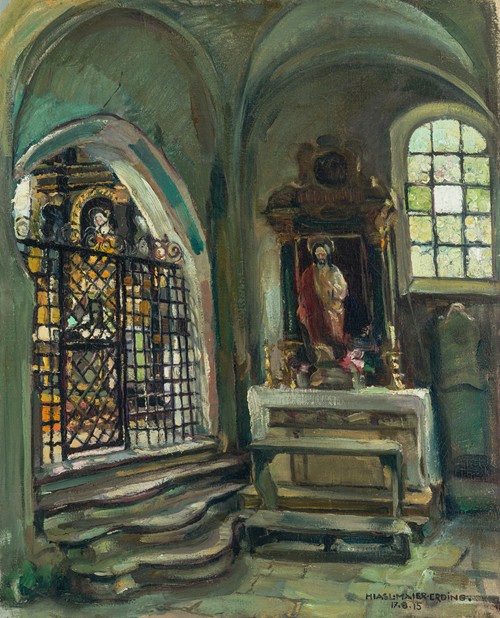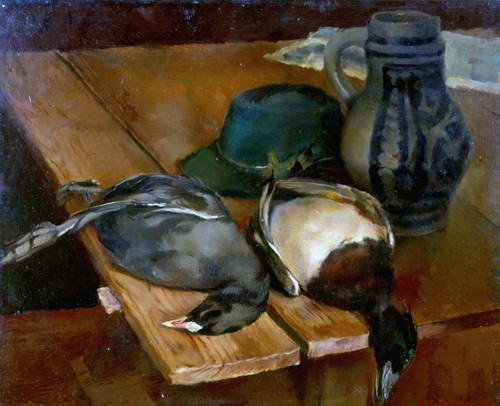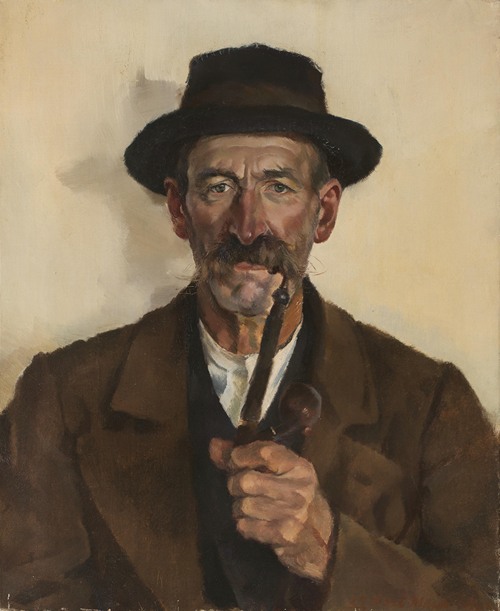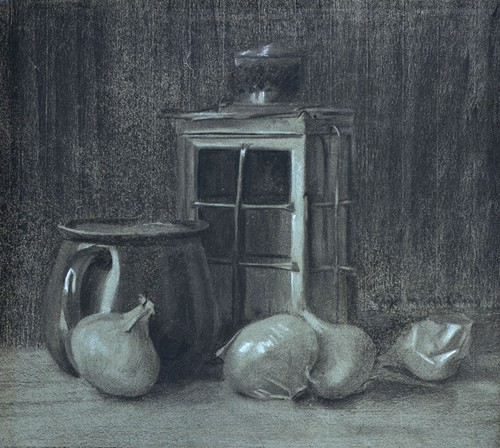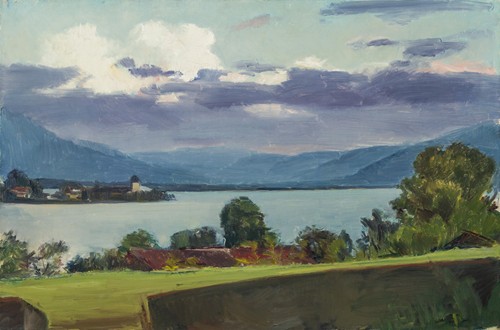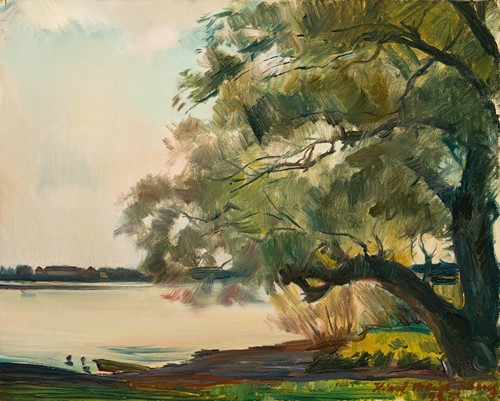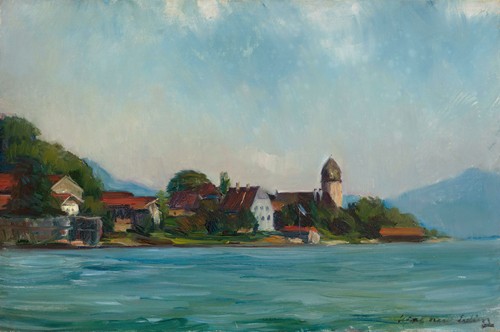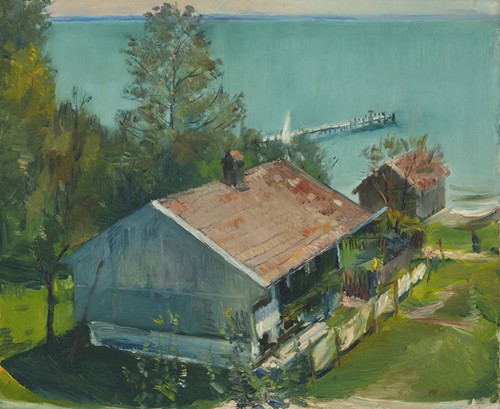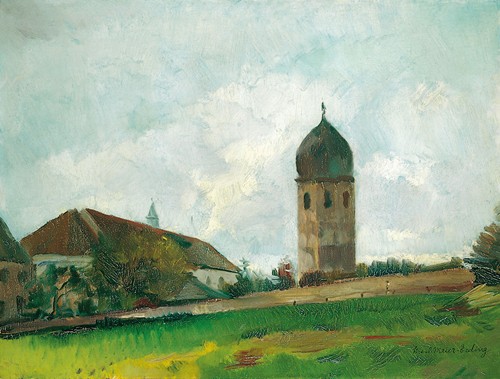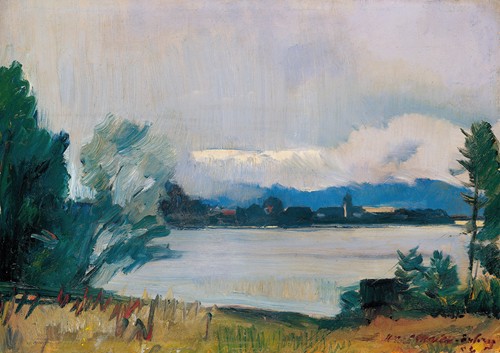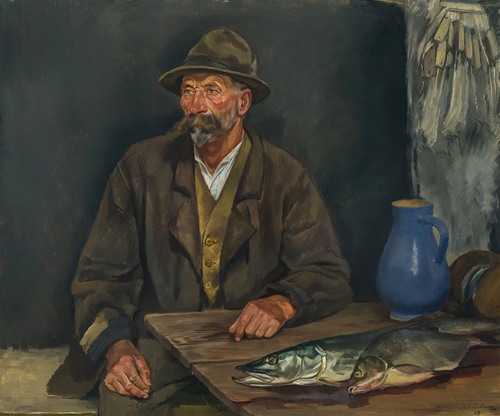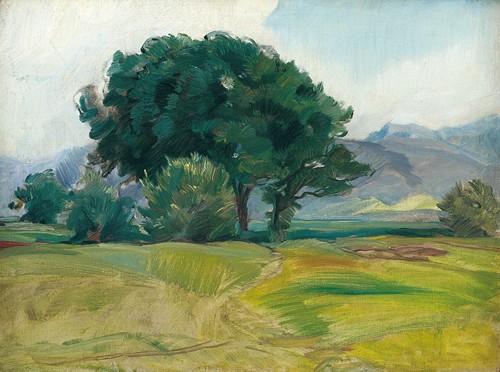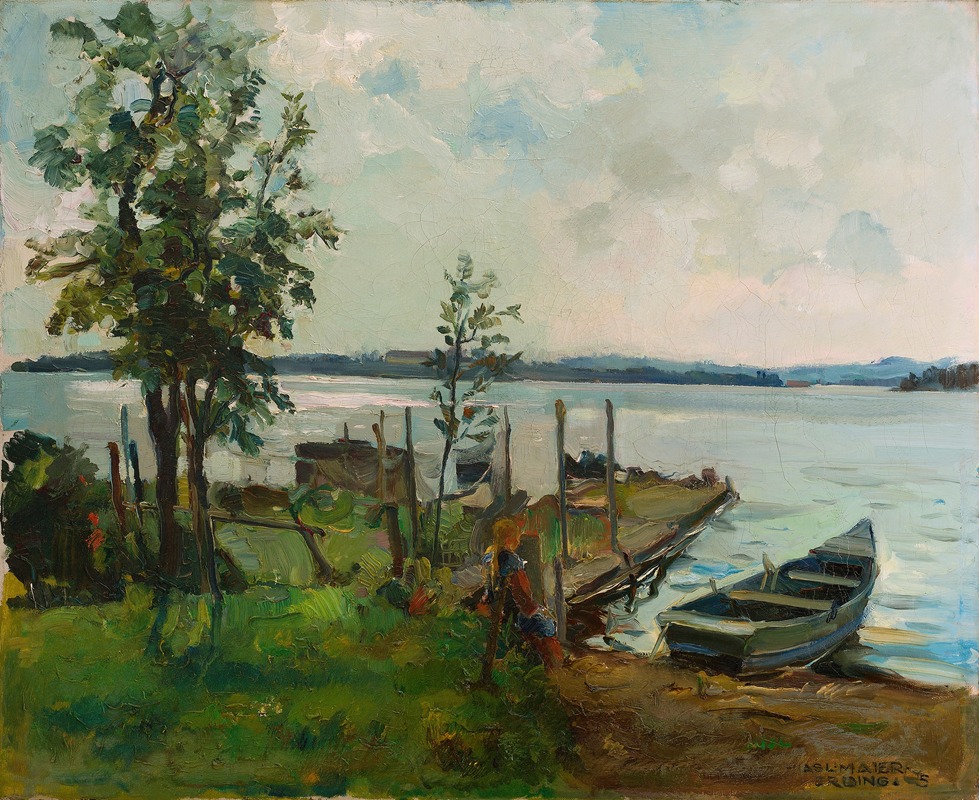
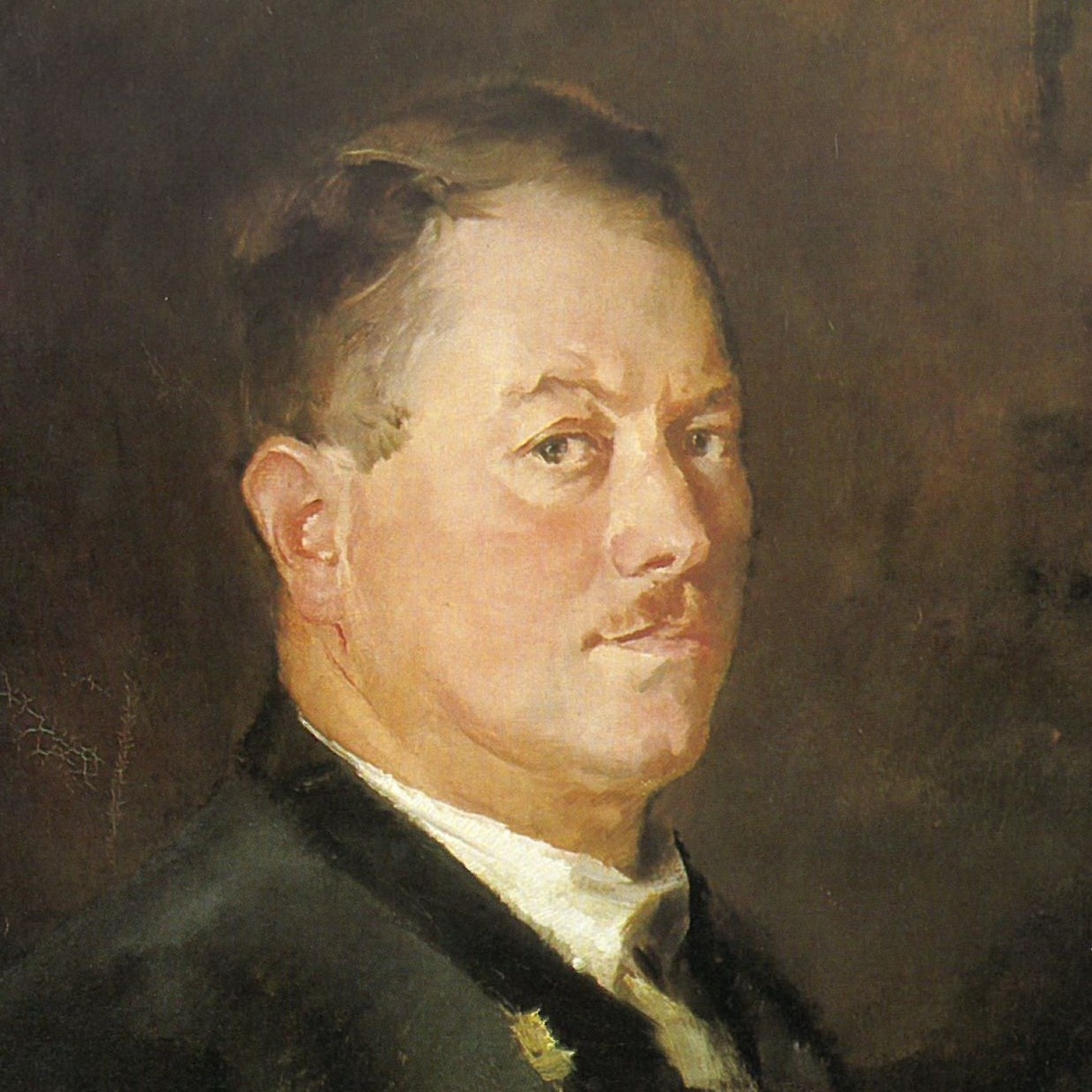
Hiasl Maier-Erding was a German painter. He became known as a Chiemsee painter and portraitist.
Maier was the second son of the Mayr family of innkeepers in Erding. He began an apprenticeship as a decorative painter with master painter Schöberl in Prien am Chiemsee in 1907. He attended the School of Arts and Crafts from 1911 and the Academy of Fine Arts in Munich from 1912. At the beginning of the First World War in 1914, Maier was drafted into the heavy cavalry. He produced many pictures of soldiers, which made his painter famous far beyond Bavaria as art cards.
The Duke of Mecklenburg financed a study trip to major German museums and recommended him to his brother, Prince Consort Hendriek of the Netherlands, in 1916. In Holland, Maier-Erding studied Dutch masters, especially Rembrandt and Hals. Here he also painted portraits of the Prince Consort.
He returned to Lake Chiemsee in 1919. He lived and worked in Gstadt. He joined the "Frauenwörther" artists' association on the nearby island of Frauenchiemsee in 1920. He was closely acquainted with Rupprecht von Bayern.
In 1926, Maier painted the war chapel on Frauenchiemsee; the front wall of the triptych shows a praying old fishing couple against the backdrop of Lake Chiemsee with the Fraueninsel.
He died in 1933 at the age of 38 from kidney inflammation in the Third Order Hospital in Munich.
The artist was made an honorary citizen of Frauenchiemsee at the age of 33. In Erding, Hiasl-Maier-Straße was named after him, as was a path in Gstadt am Chiemsee and in Poing.
His painting Im Wirtsgarten from 1923 adorned the jug at the 2017 Autumn Festival in Erding.
